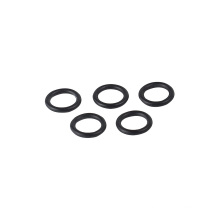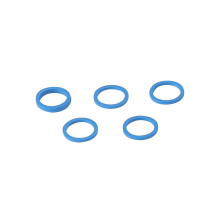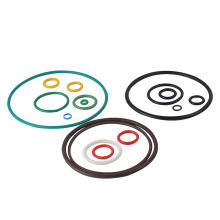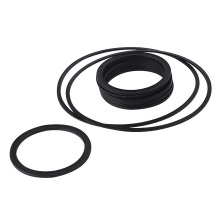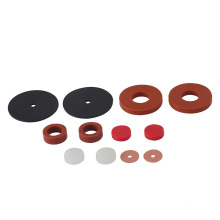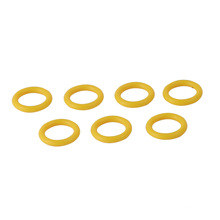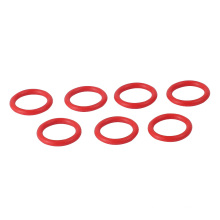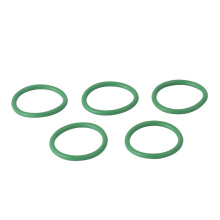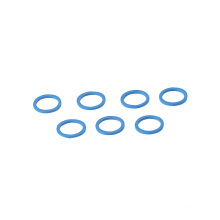What are the waterproof steps for the roof garden?
2021-05-17
At present, the building technology and decoration standards are constantly improving, while the standards for domestic building waterproofing have declined. In the past, the construction cost of roofing waterproof engineering accounted for about 5% to 10% of the project cost, but in recent years it has dropped to about 2%. The concept of waterproofing in foreign buildings has been changing, that is, not only one-time cost.
1 Analysis of the cause of water leakage
Whether it is the original design of the roof garden, or the addition of a roof garden on the top of the roof of the built house, it is necessary to damage the roof's waterproof and drainage system during the construction and daily use after the completion. Leaking water. The reasons are as follows:
1.1 The original roof waterproof layer is defective
Although the structural layer and the waterproof layer maintain the original practice, it is generally required to roll the waterproof layer on the prefabricated hollow plate, so it is inevitable that leakage occurs at the weak points such as the parapet and the gutter along the mouth. Especially for rigid waterproof roofing, the most serious problem is that the waterproof layer may crack and leak after the construction is completed. There are many reasons for cracks: climate change and roof thermal expansion and contraction caused by solar radiation; warping deformation of roof panels after stress; roof deformation caused by foundation settlement or wall shrinkage after load bearing; roof panel removal or The material shrinks and deforms.
1.2 The original waterproof layer was destroyed when the roof garden was built.
The construction of the roof garden on the roof is still likely to leak water, and a number of garden works are carried out on the roof waterproof layer which is more prone to water leakage, which is more likely to cause damage to the roof waterproof layer and cause water leakage. Even if the hole is not pierced or buried, if it is not carefully constructed, the roof waterproofing and drainage structure will be damaged, causing the roof to leak. Carrying the plant sometimes destroys the waterproof layer. For example, the shovel used for filling may damage the waterproof layer.
1.3 Roof garden water source more
The water used for watering, water pools, fountains, etc. of various plants is also extremely frequent, which increases the water source that causes leakage. The drainage system of the roof of a general building does not consider the leakage of plant water and the drainage of water works required for the construction of the roof garden. In particular, the irrigation water and the afternoon sewage of the pool contain plant roots and sediments and other chores. The drains and pipes are blocked, causing water and water leakage on the roof.
Regardless of the factors that cause water leakage, people often blame the roof garden, which creates social resistance for the promotion of the roof garden. Therefore, planning, design and construction units and users should have sufficient knowledge. To jointly handle the waterproof problem of the roof garden.
2 Construction points and precautions
2.1 Do waterproof experiments and ensure a good drainage system
To build a roof garden, a secondary waterproofing treatment must be carried out. First, check the original waterproof performance: close the water outlet, refill the water, and conduct a 96-hour (4 days and 4 nights) strict water shut-off test. In the closed water test, it is necessary to carefully observe the leakage of the room. Some houses are closed for 3 days without leaking, and the leakage begins on the fourth day. If it can guarantee that it will not leak for 96h, it means that the waterproof effect of the roof is good. This waterproof effect is also only applicable to non-roofed gardens. The waterproof layer is a key technical issue to ensure that the roof does not leak, but the roof waterproofing and drainage is one of two aspects, so the roof drainage system must also be handled. In the roof garden project, when planting pools, pools and roads are constructed, the original roof drainage system should be followed to plan and design, and the original drainage and slope should not be blocked, insulated or changed. In particular, the drainage pipe under the drainage layer of the large planting pond should be matched with the roof drainage port, pay attention to the relevant standard deviation, so that the drainage pipe under the drainage layer of the planting pond should be matched with the roof drainage port, pay attention to the relevant elevation difference, so that planting Excess irrigation in the pool can be discharged smoothly.
2.2 Does not damage the original waterproof layer
To implement the secondary waterproofing treatment, it is best to remove the overhead insulation layer of the roof and take the insulation layer without injuring the original waterproof layer. After cleaning, rinse and rinse to enhance adhesion. Under normal circumstances, it is not allowed to perforate holes and pipelines and pre-embedded iron and buried pillars on the completed roof protection water layer. Therefore, when building a roof garden on the roof of a new house, the garden design department should provide relevant technical information on the roof garden. For example, the information such as the holes to be reserved and the parts to be embedded are provided to the structural design unit, and they are reflected in the construction drawings of the building structure so that the technical requirements of the roof garden can be realized in the construction. If a roof garden is added to an old building, no matter whether it is a roof waterproofing layer, no hole or hole and buried iron and pillars should be pierced in the roof. Even general equipment cannot “root” on the roof, and only other measures can be taken to “float” them on the roof.
2.3 Pay attention to the construction quality of waterproof layer
At present, the waterproof treatment methods of the roof garden mainly include the distinction of rigid and soft, each having its own characteristics. Since vermiculite cultivation has a good curing effect on the roof, it is best to use rigid waterproofing for roof waterproofing. It is advisable to first make a waterproof layer of coating film and then make a rigid waterproof layer. The practice can refer to the detailed design of the standard design. The rigid waterproof layer is mainly made of 50mm thick fine stone concrete on the roof panel, and 1 layer of ф4@200 bidirectional steel mesh is placed inside (this is the whole layer). The amount of micro-expansion agent and water can be added to the concrete used. Agent, water repellent, etc., to improve its crack resistance and impermeability. This waterproof layer is relatively hard, can prevent the penetration of the developed roots and shrubs, protect the roof, and make the whole roof have better integrity, it is not suitable for cracks, and the service life is longer, which is more waterproof than the flexible membrane. The floor is more suitable for building a roof garden. A brick retaining wall shall be provided around the roof, and a drain hole and a gutter shall be provided at the lower part of the retaining wall. When the planting roof is a flexible waterproof layer, a rigid protective layer should also be provided on the roof. That is to say, the roof can be made of one or more (composite) waterproof fortification, but the uppermost one should be a rigid waterproof layer, and the height of the waterproof layer of the roof should be 100mm higher than the overflow.
The rigid waterproof layer is affected by the thermal expansion and contraction of the roof and the deformation of the structural floor. It is advisable to have irregular cracks, which may cause the failure of rigid roof waterproofing. In order to solve this problem, in addition to the steel wire or steel mesh in the fine stone concrete of 30 to 50 mm thick, it is generally also possible to solve by providing a floating layer and a dividing seam. The so-called floating layer, that is, the isolation layer, separates the rigid waterproof layer from the structural waterproof layer to accommodate the deformation activity. The construction method is to lay a layer of dry felt or waste paper on the floor screed to form a separation layer, and then make a dry waterproof layer. It is also possible to form a barrier layer by using a heat insulating layer on the floor or a loose material such as sand ash, and then a rigid waterproof layer. The split seam of the dry waterproof layer is determined according to factors such as temperature expansion and deformation of the structural beam and plate. A 20 mm wide slit is reserved according to a certain division, and the grease paste is filled in the slit for the purpose of stretching. It should be noted that the quality of the joints of the rigid waterproof layer is often unsuitable. In addition to the strict requirements of the wall of the parapet, the other parts of the roof may not be divided. The rigid waterproof layer of the roof is preferably completely poured at one time to avoid leakage. The surface of the waterproof layer must be smooth and flat. After the construction is completed, brush 2 waterproof coatings to ensure the design and construction quality of the waterproof layer. Special attention should be paid to the anti-corrosion treatment of the waterproof layer. The partitioning seam on the waterproof layer can be covered with “one cloth and four coatings” and the caulking grease with good corrosion resistance is used. It is not advisable to plant plants with strong roots and strong erosion on the waterproof layer, such as pine, cypress, and eucalyptus.
2.4 Note material quality and node construction
Waterproof materials with high temperature, no flow, no cracking, no aging, and good waterproof effect should be selected. The rigid multi-layer plastering mortar mortar waterproof layer should be made of ordinary Portland cement and expanded cement with the label no less than the original 325#, or slag Portland cement; the sand is made of coarse sand with a particle size of 1-3 mm, and the sand is required. Hard, rough and clean; the mixing ratio of cement slurry and cement mortar should be determined according to waterproof requirements, raw material properties and construction methods, and must be strictly controlled during construction. At present, some buildings also have a flexible waterproof layer. The roof garden often has “three felts and four oils” or “two felts and three oils”, which are combined with polyvinyl chloride cement or polyvinyl chloride paint. In recent years, some new waterproof materials have also been put into use, and EPDM coils that have been put into the roof construction have a good effect. There are also attempts to use hollow foamed plastic products as a good drainage layer and filler between the green soil layer and the roof to reduce the weight. With recycled rubber base, plus asphalt waterproof coating, paste 3mm thick glass fiber cloth as waterproof layer, which is more conducive to rapid construction. There is also an insulator layer (becoming a buffer zone) between the waterproof layer and the slate to prevent upward vibration, waterproof and heat insulation, and a PUK polyurethane coating waterproof layer on the roof slab in the greening position to prevent water leakage. .
No matter which form and material is used, the roof waterproofing layer constitutes the waterproof drainage system of the entire roof. All the required pipes, flue pipes, drainage holes, pre-embedded iron parts and pillars should be used for roof waterproofing. The node structure should be properly handled at the time of the layer, paying particular attention to the part of the joint with the soil and the end of the drain water flow. The overall rigid waterproof layer often fails to handle the entire roof due to improper handling of these small structural nodes. In addition, the vertical and horizontal division slits are conventionally set, and the structure is complicated and easy to leak. When installing a waterproof board, when a waterproof board is not wide enough and several pieces are to be placed side by side, it should be noted that the gap between the board and the board also provides potential space for root growth.
The construction method is preferably a hot coating effect, and the hot coating material can penetrate into the gap after being heated. The weak parts of the roof, such as around the venting channel and around the parapet wall, should be strengthened. Especially around the parapet wall, the waterproof layer should extend up to tens of centimeters to the wall, beyond the position of the upper layer of the flower bed in the future, otherwise it should be leaked. The thickness and number of layers of the waterproof layer shall be constructed in strict accordance with the relevant national regulations and specifications. At least it shall be “one cloth and two oils”, that is, two layers of hot-coated oily materials, and the middle one layer shall be used as a waterproof fabric for “ribs”. After the waterproof treatment is completed, the surface should be covered with high-grade cement mortar to protect the waterproof layer. Construction should be avoided in wet conditions, and the roof should not be dry and should not be constructed. After the waterproof layer is completed, it should be cured in time, and water must not be cut off after storage. The garden works and architectural sketches of the roof garden are only constructed after confirming that the roof waterproofing works are intact.
3 Project examples
In view of the roof leakage problem, the concept of “ecological planting roof composite drainage and respiratory system” has been proposed. The use of advanced roof ecological waterproof ventilation and water guiding technology to achieve the long-term goal of natural roof waterproofing, the central idea is to "guide", not to compete with nature, but through water, tide, ventilation and vegetation The ecological cycle solves the problem of water saturation in the insulation layer and the temperature difference between the inside and the outside, achieving multiple objectives of water-proof, waterproof and beautifying the environment. The following is a detailed description of the application of the system through a roof garden of a building.
The system is developed on the basis of the original waterproof design, as shown in Figure 1, which overcomes the shortage of the waterproof layer of the coil and utilizes the thermal insulation effect of the planting layer. The basic principle is that the guest soil layer is not only the soil layer and the drainage layer of the vegetation, but also plays the role of water absorption, heat insulation and protection of the roof to find the slope layer or the base layer. The vegetation absorbs the carbon dioxide emitted from the room, exhaling oxygen, and at the same time, it absorbs the moisture in the soil layer. Because vegetation absorbs the heat of solar radiation and transforms it into biochemical energy through photosynthesis, it changes the form of energy. In addition, the surface has low reflection heat, small long-wave radiation, and good thermal insulation performance in winter, so the vegetation also has good thermal performance. Through the exhaust, the indoor humid air and the turbid air can be discharged to the outdoor atmosphere, and the warmer and carbon dioxide-containing air discharged is beneficial to the growth of the vegetation, and the outdoor fresh air can enter the room from the conduit at the same time, thereby promoting the air. Flow, slow down the pressure difference between indoor and outdoor, reduce or even eliminate the accumulation of condensate. The rainwater filtered by the roof drainage layer is quickly drained through the drainage channel system in which the interval leveling is criss-crossed, and no water is formed on the roof, so there is no water leakage. The roof tank connects several branch pipes and is arranged in the inner layer of the guest soil. Water-saving irrigation is used to replenish the vegetation layer in the dry and summer seasons, which is conducive to vegetation growth. The vegetation growth is beneficial to heat insulation in summer and lowering the room temperature. Large ecological circulation system.
4 experience and summary
(1) The concept of building waterproofing should be changed. First of all, we must improve the understanding of the importance of waterproof technology. At present, the building technology and decoration standards are constantly improving, while the standards for domestic building waterproofing have declined. In the past, the construction cost of roofing waterproof engineering accounted for about 5% to 10% of the project cost, but in recent years it has dropped to about 2%. The concept of foreign building waterproofing has been changing, that is, not only considering the one-time cost, but also considering the cost and use period of the waterproof project, and emphasizing the improvement of the use function.
(2) Pay attention to the matching, coordination and optimization between waterproof design and construction technology, waterproof material and structure and base layer, construction time and environment to obtain the best waterproof effect. Therefore, all the facilities related to the roof waterproofing layer of the building roof should be expressed in the construction drawing of the roof building structure, and there is a clear waterproof structure.
(3) Reasonable material selection is the key to achieving the comprehensive effect of technology and economy. The main principle is to select its structure, geographical location, climatic conditions, waterproof level, waterproof layer structure, waterproof parts and detailed structure according to the importance of the building; select waterproof materials according to local climate characteristics; according to the performance of waterproof materials, waterproof level The requirements to determine the thickness of the waterproof layer. Nowadays, there are many kinds of waterproof materials, and the quality of products varies greatly. Designers should fully understand the performance of these materials, and choose the right waterproof materials to form a waterproof layer that is both economical and effective. The roof of large-scale projects, especially the roofs of high-rise buildings, should be made of high-grade or medium-grade waterproof materials, so that it can be adapted to the grades and standards of the buildings.
Waterproofing is at the heart of the safe work of the roof garden. Waterproofing is at the heart of the safe work of the roof garden. The quality of waterproof engineering is closely related to design and construction and materials. Based on materials, design is the premise and construction is the key. In order to do a good job in waterproofing the roof garden, we must choose reliable waterproof materials, make reasonable structures, and ensure good construction quality.
Passenger Elevator Buffers
Panoramic Elevator Buffers
Home Elevator Buffers
Hospital Bed Elevator Buffers
Freight Elevator Buffers
Car Elevator Buffers
Service Elevator Buffers
Goods Elevator Buffers
MRL Elevator Buffers
Machine Room Elevator Buffers
Residence Elevator Buffers
Automobile Elevator Buffers
OTIS Elevator Buffers, Thyssen Elevator Buffers, KONE Elevator Buffers, GiantKONE Elevator Buffers, ThyssenKrupp Elevator Buffers, Schindler Elevator Buffers, XJ Schindler Elevator Buffers, Xizi OTIS Elevator Buffers, Mitsubishi Elevator Buffers, Shanghai Mitsubishi Elevator Buffers, Fujitec Elevator Buffers, Hitachi Elevator Buffers, Toshiba Elevator Buffers, Hyundai Elevator Buffers, LG Elevator Buffers, Sigma Elevator Buffers, Express Elevator Buffers, GUANGRI Elevator Buffers, FUJI Elevator Buffers, BLT Elevator Buffers, CANNY Elevator Buffers, SJEC Elevator Buffers, KOYO Elevator Buffers, IFE Elevator Buffers
Elevator Buffer, Elevator Polyurethane Buffer, Elevator Safety Parts Oil Buffer, Residential Elevator Oil Buffer
Piston Seals, Oil Seal Co., Ltd. http://www.zjelevatortravelingcable.com
